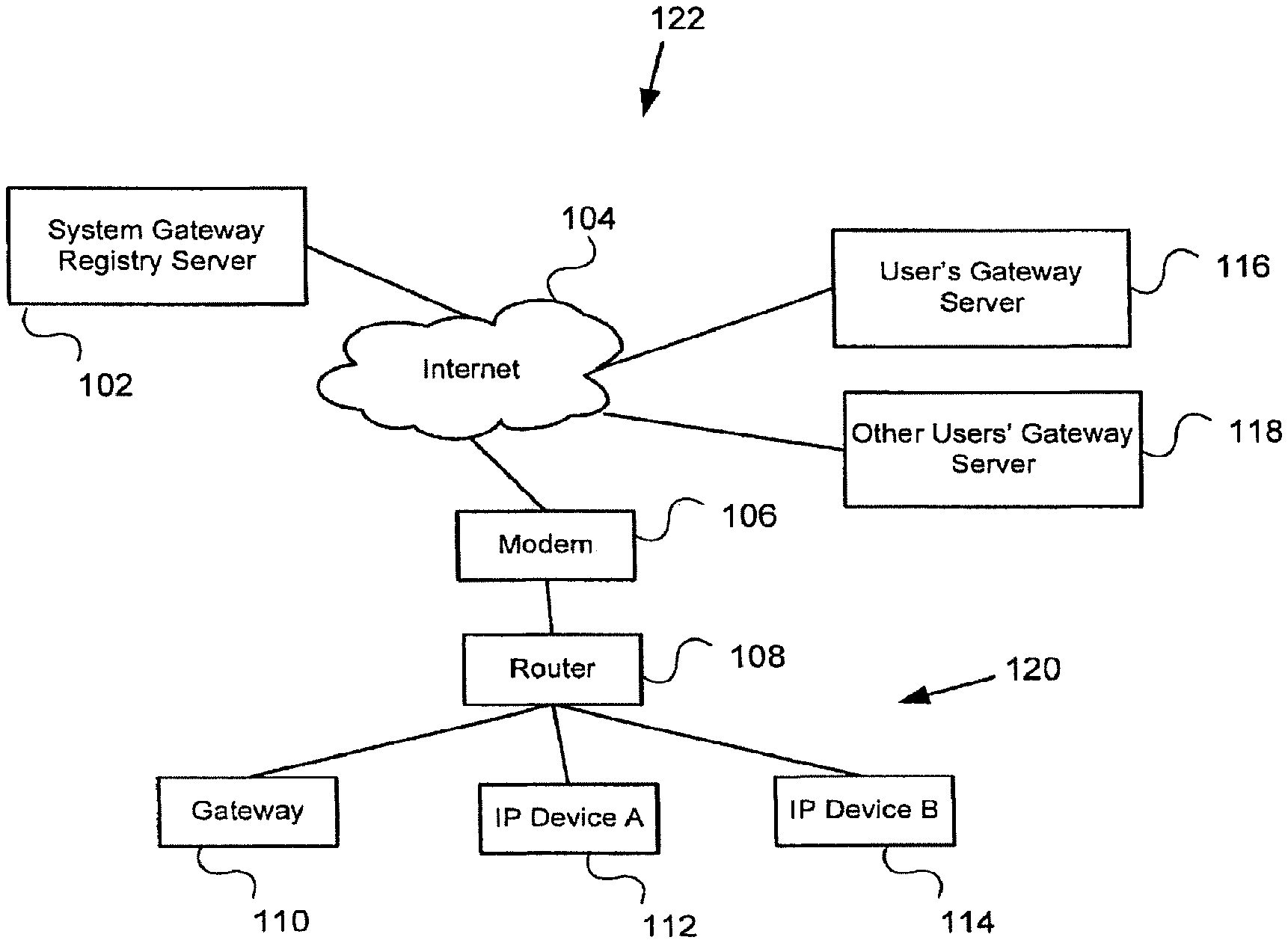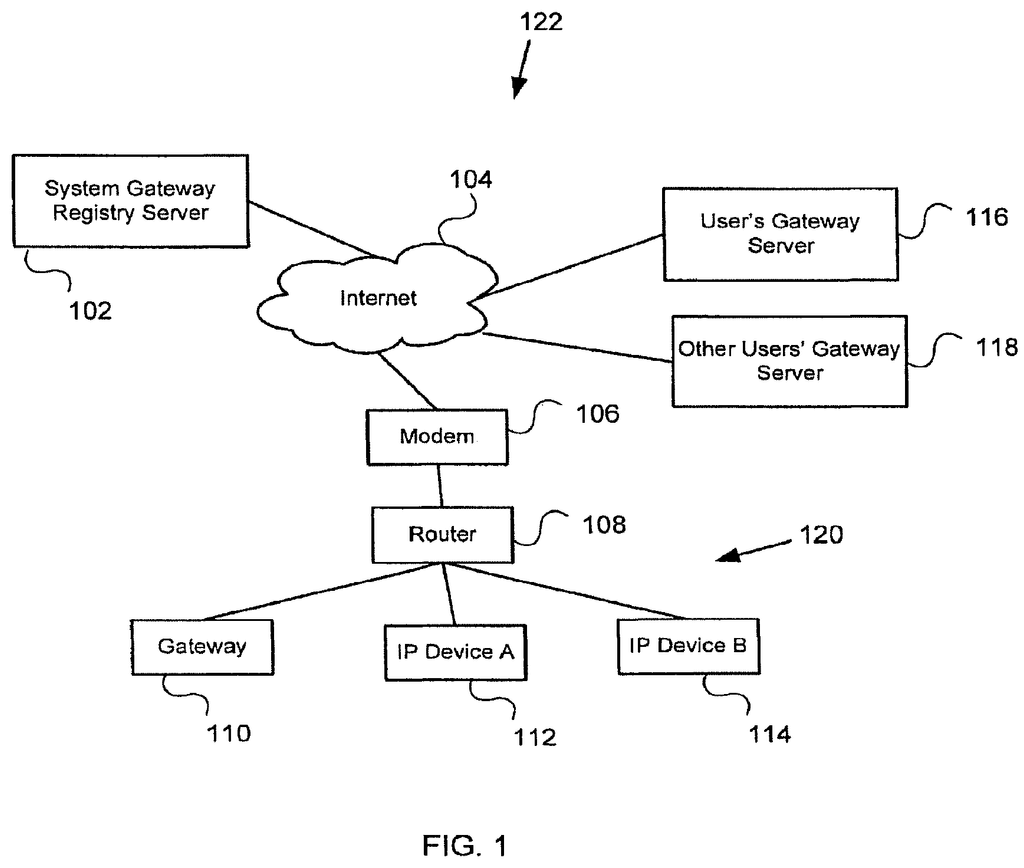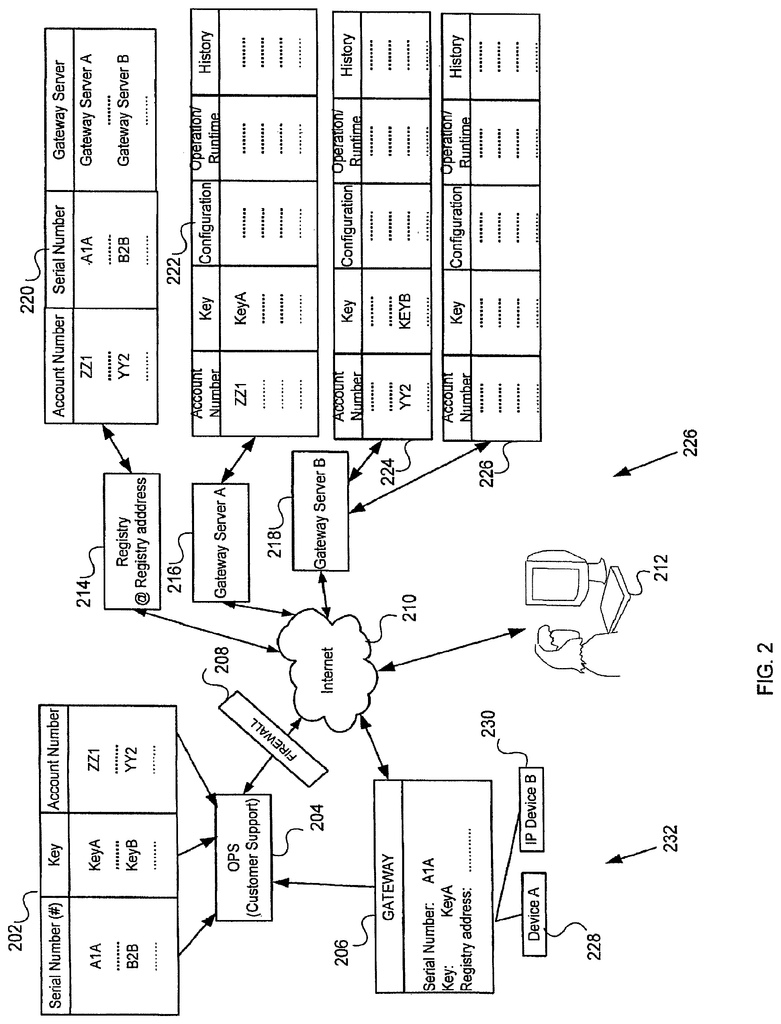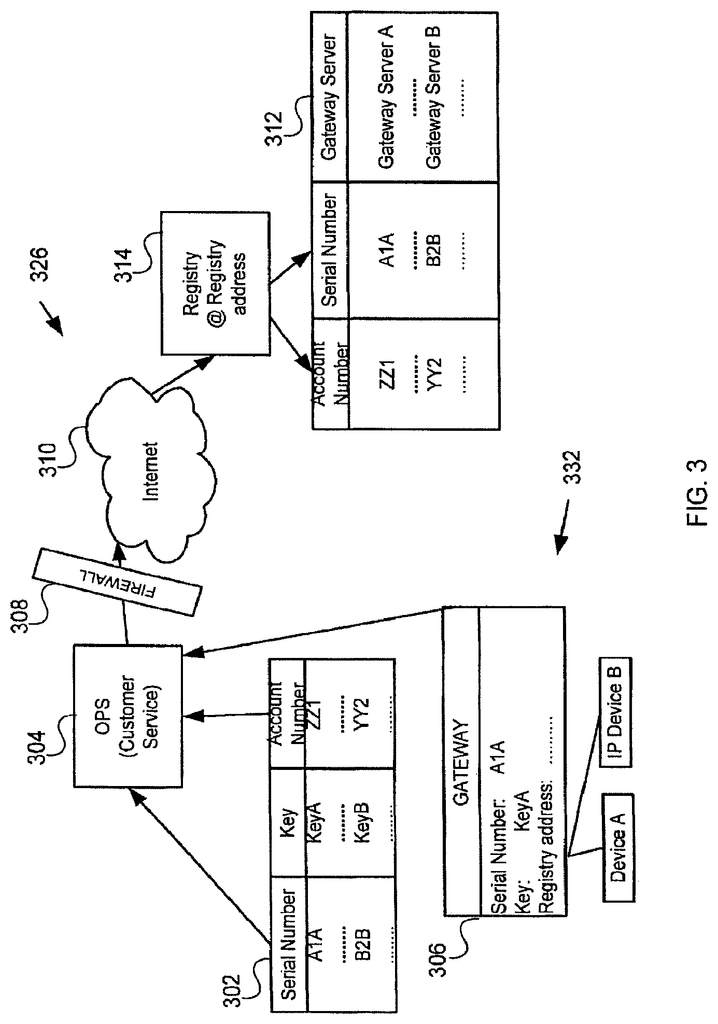Invented by Gerald Gutt, Aaron Wood, IControl Networks Inc
The market for Gateway Registry Methods and Systems is growing rapidly, driven by the increasing demand for these solutions across a wide range of industries. From healthcare and finance to retail and manufacturing, businesses of all sizes and types are looking for ways to better manage their data and communication processes, and Gateway Registry Methods and Systems are proving to be an effective solution.
One of the key drivers of the market for Gateway Registry Methods and Systems is the increasing need for businesses to manage their data more effectively. With the rise of big data and the increasing importance of data analytics in business decision-making, companies are looking for ways to better manage and analyze their data. Gateway Registry Methods and Systems provide a centralized platform for managing data, making it easier for businesses to access and analyze their data in real-time.
Another key driver of the market for Gateway Registry Methods and Systems is the need for businesses to improve their communication processes. With the rise of digital communication channels such as email, social media, and messaging apps, businesses are looking for ways to better manage their communication processes across multiple channels. Gateway Registry Methods and Systems provide a centralized platform for managing communication processes, making it easier for businesses to communicate with their customers and partners across multiple channels.
In addition to these drivers, the market for Gateway Registry Methods and Systems is also being driven by the increasing adoption of cloud computing and mobile technologies. As businesses move more of their operations to the cloud and employees increasingly work from mobile devices, Gateway Registry Methods and Systems are becoming an essential tool for managing data and communication processes across multiple devices and platforms.
Overall, the market for Gateway Registry Methods and Systems is expected to continue to grow in the coming years as businesses look for ways to improve their operations and stay competitive in an increasingly digital world. With the increasing importance of data and communication in business decision-making, Gateway Registry Methods and Systems are proving to be an essential tool for businesses of all sizes and types.
The IControl Networks Inc invention works as follows
Methods and systems are described to manage a gateway device. An account can be created by a user to manage a gateway device. The account can be assigned to a server remotely to allow remote control of the gateway device. By sending the connection details of the remote server, the gateway device can be configured.
Background for Gateway Registry Methods and Systems
Vendors, such as vendors of communication services, Internet portals, or premises, may wish to extend their relationship beyond the immediate transaction. Vendors may also want additional premises management services for communication services, Internet portals, or premises beyond the immediate transaction. “There is a demand for advanced facilities management services, devices, and methods.
The preferred embodiments described and shown herein are only examples. “Various alternatives to embodiments of the present invention described herein can be used in practice.
Some embodiments include devices, methods and systems for initializing a system gateway, also known as a device gateway or gateway, which is used to control a local network at a particular location. The gateway can be used to manage the network or devices. It is possible to do this from a remote location. The devices can be located in a location, such as a home or business, and devices such as cameras or thermostats can be controlled remotely from a location, such as an office, or even a cell phone.
In some embodiments, system gateway devices are connected to gateway servers that store account information. The gateway does not know which server is hosting the account, but it can be shown or told. This allows the user to manage their account remotely. A gateway registry is used in the methods, devices, and systems described herein. The gateway registry informs the gateway of the location of the server that contains the account for the account associated with it. Location can be, for instance, the server’s address. FIG. shows an embodiment of the gateway registry system. 1. FIG. According to one embodiment, FIG. 1 shows a block diagram for a system 122 that manages control networks, including a network of control 120 with a gateway 110. FIG. FIG.
The gateway is validated, in certain embodiments, by the gateway servers in order to access the user account. The gateway then downloads and uploads the data from the premises where it is installed.
In some embodiments, a remote location may be used to adjust the configuration of the local network managed by the gateway. In some embodiments, the setup can be changed from the premises that house the local network the gateway manages. In other embodiments, configuration can be changed from the remote location or the location of the premises.
For example, FIG. According to one embodiment, FIG. 2 shows a block diagram for a system that manages a number of control networks, such as the control network 232, with gateway devices, including Device A 228 and IP device B 230. FIG. FIG. A gateway device 206 is also shown, which includes the serial number of the gateway (serial #), which can be its MAC id, or Ethernet address, a password for the gateway (which may have been installed by the gateway manufacturer), and an address of the registry (which may be a Uniform Resources Locator (URL), address for the registry server 214. The embodiment shown in FIG. The operational server (OPS), 204, is connected to the database 202. This database (which can be called a database master or a table), contains serial numbers, keys, and account identifications. OPS 204 connects to Internet 210 via a firewall 208. The master database 202 is used to send to the gateway registry 214 information about the serial number for the gateway 206. This includes the account number or account identification associated with the gate, as well as the server address associated with that account. The master database 202 is used to send account information to the gateway server, such as the account number and/or key for the gateway. Gateway registry 214 is the embodiment shown in FIG. The Internet 210 is connected to the 2 and a table 220 containing account numbers and gateway servers associated with serial numbers of gateways. Table 220 in the Gateway Registry 214 according to the embodiment shown in FIG. The table 220 of the Gateway registry 214 depicted in FIG. 2 contains the addresses or information regarding which gateway servers 216 and 218 connected with Internet 210 are hosting the accounts associated to gateway account numbers and key (which is associated with a gate 206). Tables 222,224,226 on the Gateway servers 216 and 218 contain account information for gateways, such as gateway 206. Account information can include, for example, account numbers, keys, and configurations for devices associated with gateways 206. It may also include the time of operation or runtime associated with gateways 206 or the control networks 232. Tables (for instance tables 224, 226) may be associated with multiple servers (for example, server 218). There may also be several gateway servers 216, 218. In most cases, the account for a gateway (206, for example) is stored in a table (for instance table 222) located on a server (for instance server 216). Other arrangements are also described and contemplated.
The keys can be protected and controlled so that only authorized systems, devices and/or users have access to them. The keys can be encrypted when they are transferred via a non-secure or secure connection. A firewall can protect the keys. In some embodiments the accounts on the server may contain account configurations, information about operation times and/or runtimes, and/or information about account history.
The embodiment of FIG. The diagram in Figure 2 shows examples of connections between and to each element shown, through which communication could be transmitted as described. The connections shown in FIG. The connections shown in FIG. “2 may be connected in other ways, including wirelessly or through another device.
The present invention provides methods and systems that enable a gateway to discover the server hosting the account of a user. Herein are gateway systems and/or devices that can detect the server hosting the user’s accounts.
Each Ethernet gateway device has a unique address in its hardware.” Ethernet devices also have unique addresses called gateway device addresses. As a serial number, the Ethernet address of a device can be used. Another combination of letters and numbers may also be used. In some embodiments the gateway may store the unique hardware address to initialize the gateway device. A unique key may be placed into the gateway device at production time or later. The unique address and key are both stored in the master database to be linked to the account after the gateway has been associated with the account. The master database can be secured with different levels of access only available to authorized personnel, such as the customer service personnel who manages the master database. The master database can be protected by a device called a firewall (a firewall).
Accordingly, in some embodiments a central repository stores all account numbers known and the gateway unique number associated with each account. Gateways also store the location of the central repositories. In some embodiments, the central repository can be a gateway server or registry of all accounts and gateways. The gateway registry can also be filled with gateway server information that is stored in the master database. The gateway server information can also be known by the third party who controls the gateway server. They may communicate the server information directly to the registry, which then records the address of the server associated with the account. In another embodiment of the system, the gateway information can be known by the third party who controls the gateway. The third party then communicates directly or indirectly the server data to the master database. The master database populates the registry using the server details associated with an account.
In some embodiments, a central repository (gateway registries) is filled using a secured connection to the Internet with the account numbers associated with gateway devices and the serial numbers of the gateways associated with account number and system.
FIG. According to one embodiment, FIG. 3 is a diagram showing a system for managing control networks (332, for example) that shows management of keys and serial numbers. In FIG. In FIG. 3, couplings and information passed between the gateway device 306, master database of the operational server 302 and gateway registry 314 are shown. The embodiment shown in FIG. The operational server (OPS), 304, and/or customer service entity populate a master database 302 upon the association of a device 306 with an account. This account identification may be an account code. As shown in FIG., the operational server (OPS), or a customer service organization, populates a master database 302 with account identification (which may be an account number) associated with the gateway device 306. The serial number of the gateway 306 associated with the account identification and key for that gateway are also included. “Using a firewall 308-protected secure connection to the Internet 310, the table 312 in the gateway registry can also be populated with account information associated with gateway device 306 as well as the serial number associated with that account.
According to certain embodiments, the operational server (OPS), or a customer service entity, may populate the gateway server with the account ID (or account number), associated with a gateway, and the key associated to the gateway, after the device is associated to the account. The OPS master database may provide to the gateway server the account number associated with the device and/or key.
In some embodiments, the OPS identifies the server that has the account associated with a gateway device when the account number and unique address are populated in a gateway registry. In some embodiments the OPS temporarily stores the server information in the master database or temporarily stores the server data for a period of time sufficient to populate the server and account number with the key that is associated with gateway device. In some embodiments the server information may be permanently stored in the master data base when the gateway registry has been populated from the master database. In some embodiments the OPS designates the server. In some embodiments, a third-party or system which can manage the account on the server but may or may no manage it designates the server.
In some embodiments, a third-party controlling the gateway may know the gateway information. The third-party then communicates this information directly to the registry, which records the server addresses associated with each account. In another embodiment the gateway information can be known by the third party who controls the gateway. The third party then communicates directly or indirectly the server data to the master database. This master database populates the registry using the server details associated with an account.
For example, FIG. According to one embodiment, FIG. 4 is a diagram showing a block of a control network management system (not shown), which stores account information. FIG. FIG.
In some embodiments the central repository of all known gateways and accounts, also called the gateway registry or gateway registry server in some embodiments, is used to determine which gateway server (also called the account server or gateway server in some embodiments) holds the account data associated with the portal. “The central repository, in some embodiments a gateway registry and/or gateway registry server, of all known accounts and gateways is used to find which account information associated with the portal is held by a particular gateway server (see for non-limiting example FIGS. Although there may exist several gateway registries, a device only knows the address or location of the gateway registry that contains the unique gateway address, account identification and the address (or location) for the gateway servers holding the account for the device. In some embodiments the gateway registry or registries, gateway server and/or gateway devices are located in different locations physically and/or on different hardware. In some embodiments the gateway registry and/or the gateway servers are logical constructs or conceptual locations within a piece of hardware. In some embodiments, different combinations of conceptual places, logical constructs and physical locations are contemplated for the gateway registry and registries, gateway server and/or gateway services.
At power on, the device initializes and sends a message to the central repository, (for example the gateway registry), specifying the unique gateway address, such as a serial number or Ethernet address of the gateway. In some embodiments the serial number of the gateway can be the Ethernet address. This address can then be used to locate the user account that is associated with the unique gateway address and to respond back to gateway device the location of the server it will use to find the account for the gateway device. The gateway server located at this location contains the account of the gateway device that requested information from the registry. In some embodiments the account number is associated with the unique registrant server address. In some embodiments, user account lookup is the account number associated with the unique registry server address. “The gateway server address and user account lookup are not sensitive in the sense that they do not allow access to the gateway (as described in this document) or the account associated with the gateway to which the unique address is provided.
For example, FIG. According to one embodiment, FIG. 5 shows a block diagram for a system 526 that manages control networks (such as control network 532) and initializes a gateway device 502. FIG. FIG. 5 is a diagram showing the couplings and information between a gateway device 502. This is used to implement a method to determine where the account is associated with the device 502. It also helps to determine the account number. The embodiment depicted in FIG. Gateway 502 initializes and sends a message to the gateway registry 514, at the address of the registry stored in the gateway memory. For example, the table 512 in the registry 514. The serial number of the gateway is specified in the request. In FIG. In the FIG. The registry 514 replies to the gateway 502 by providing the account number or account identification (in some embodiments), and the location of the server containing the account associated with it. In some embodiments, the gateway 502 saves the account number and server location into its memory.
Click here to view the patent on Google Patents.









